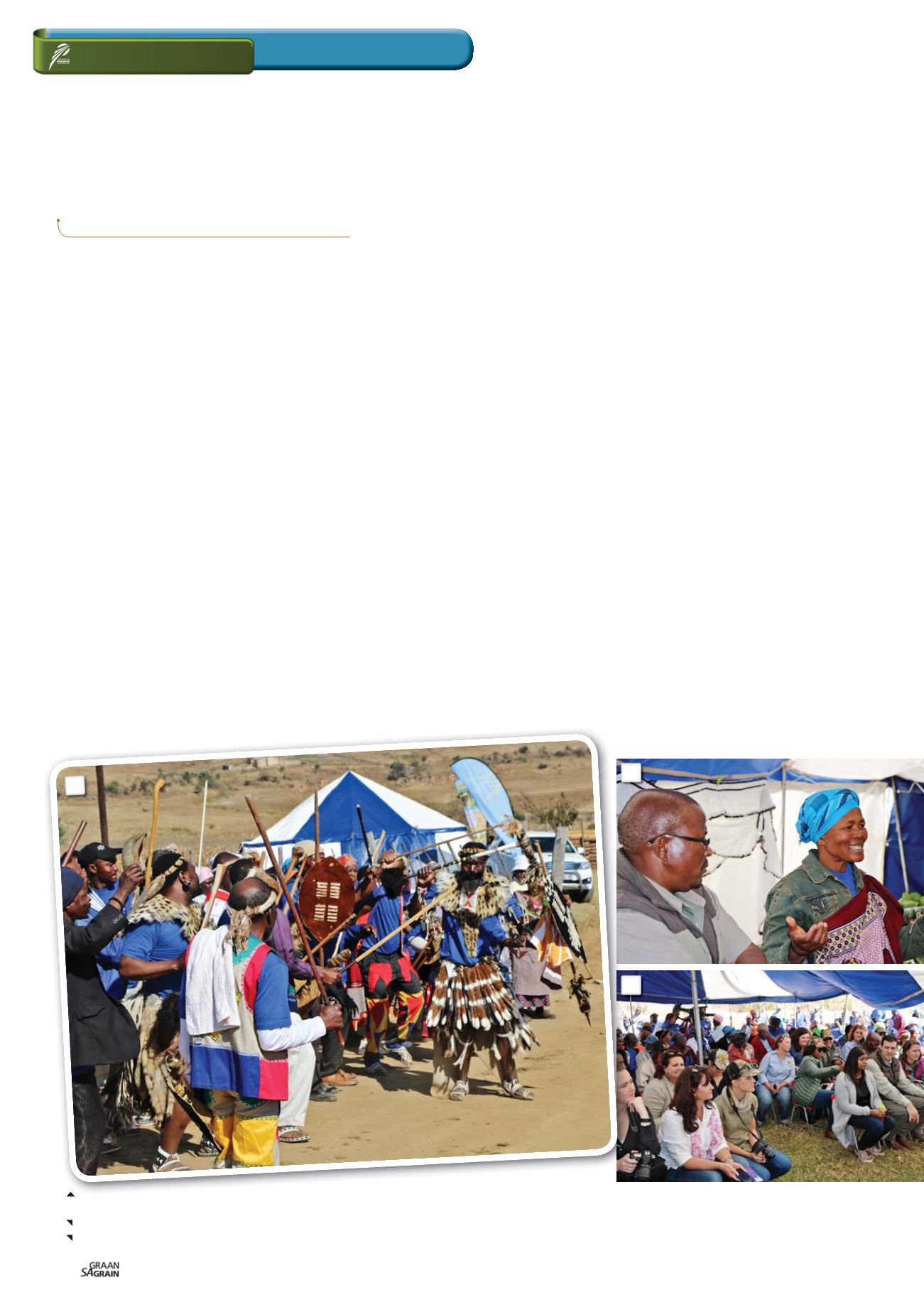

September 2017
118
Feeding the world
H
unger not only affects the stomach, it also has direct in-
fluence on the development of children all over the world
– physically as well as mentally. Too many men and women
across the world struggle to feed their children a healthy
meal every day. Out of the 795 million people in the world one in
nine still daily goes to bed hungry. Even worse: One in every three
people suffers from some form of malnutrition.
Even though most of us reading this article never experienced real
hunger in our lives, we know that if that were the position you found
yourself in and it somehow changed to where you experience a situ-
ation of abundance, it would be truly life-changing. And this is the
story of Mss Mavis Hlatshwayo.
Hlatshwayo farms on 3 ha in the Hereford district, close to the
Oshoek border post in Mpumalanga. Her husband died a couple of
years ago and left her to fend for herself and their children. She did
what she could on the land allocated to her, but sadly she was part
of a community who experienced hunger regularly.
Grain SA approached the Hereford community to become part of
their Subsistence to Abundance project. The main object of this
project is to teach farmers good farming practices whilst making the
best technology available to them. That was when this life-chang-
ing journey for Hlatshwayo and others in the Hereford community
started.
Hlatshwayo joined a Grain SA study group and never missed a
meeting. She was eager to learn to better her yield and work towards
food security for her household and the community. Monsanto, as
a partner in the project, provided them with good quality biotech
seeds and it was not long before the Hereford community could
experience the benefits of biotechnology and good production
practices first-hand.
Four years ago, Hlatshwayo barely harvested 2 t/ha and it was
impossible for her to feed her children with the little grain she pro-
duced. This season, she planted Monsanto’s DKC 7B-83R cultivar
and harvested a commercial yield of over 6 t/ha. That surely is
life-changing.
It is priceless to see how she stands up and tells everybody
with passion and pride how taking part in the Subsistence to Abun-
dance project changed their lives. In her own words, ‘We are so
thankful to Grain SA and the rest of their partners for bringing us
where we are today. In this community, nobody goes to bed hun-
gry anymore. We have enough to feed our children, give to the less
fortunate and sell our surplus. The money we earn makes it possible
for us to buy other essentials and send our children to school.’
Visit to Vongotti research farm
As the seed partner in this project, Monsanto SA works tirelessly
to develop seeds that will produce the ultimate yield in a sustain-
able manner under specific conditions. In Mpumalanga, close to
Malelane, the company acquired the 100 ha Vongotti farm in 1997. In
this subtropical region, it is possible to have two maize harvests an-
nually, which expedite trials substantially.
RELEVANT
HANLIE DU PLESSIS,
SA Graan/Grain
contributor
1: Members of the community and the study group welcome the deputation of Monsanto and
Grain SA staff, as well as journalists during their visit to Hereford in June this year.
Photo: Dirk Kotze
2: Shadrack Mabuza (mentor) listens attentively while Mavis Hlatshwayo talks to the visitors.
Photo: Dirk Kotze
3: The visitors literally hung on the words of the producers.
Photo: Dirk Kotze
1
2
3

















